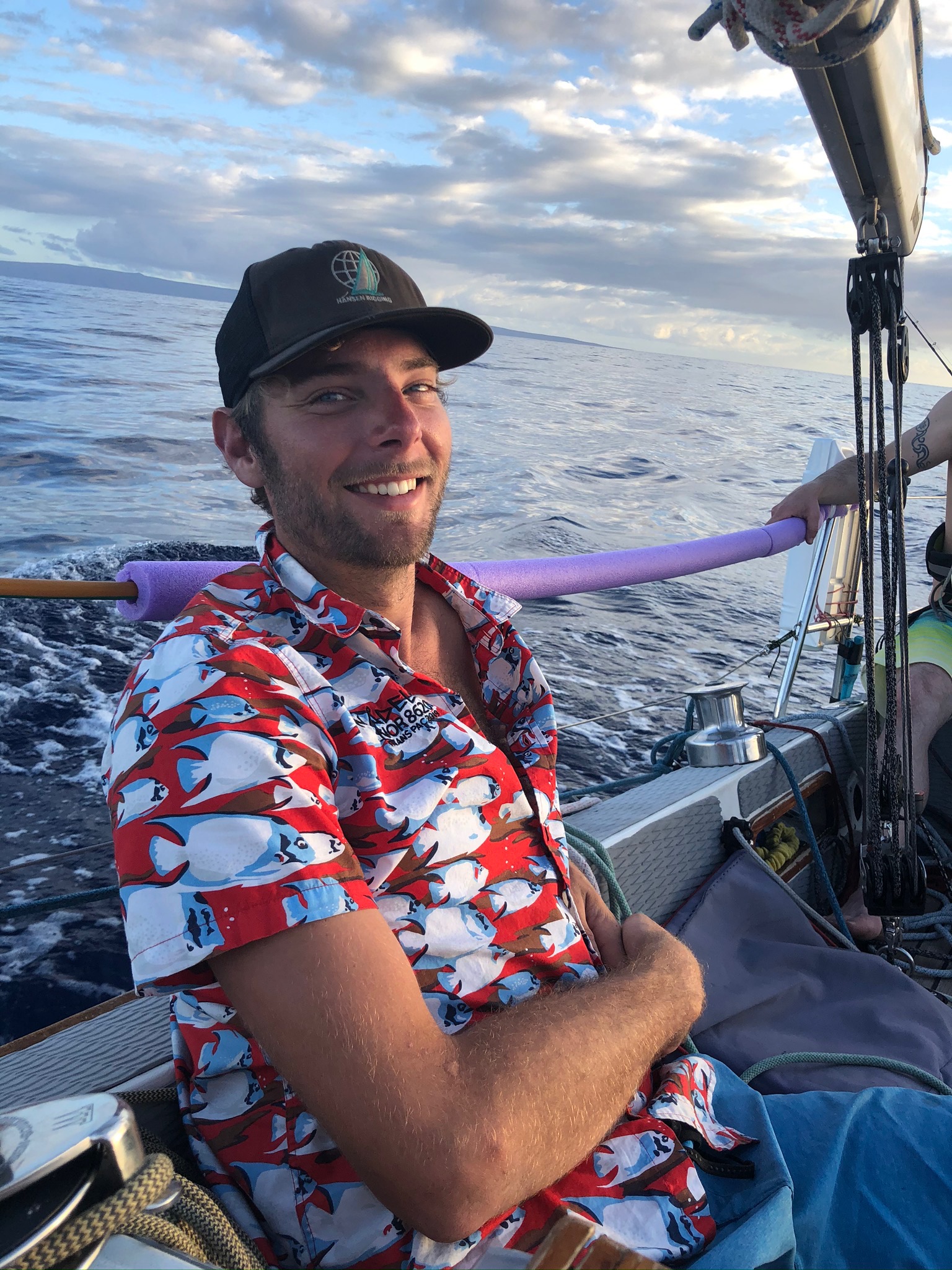Ian Ferguson is 29 years old, just completed his first ocean voyage on the TRANSPAC race On a Wasa 55 that he owns named “Nådeløs“. He was the youngest skipper in that race. He also owns a Lido 14, Flying Dutchmans. He mostly sails the Lido with his family and very close friends on a San Pablo Dam (a lake in his home town). He is a member of Waikiki Yacht Club and Encinal Yacht Club has provided tremendous support.
Ian Ferguson’s Nådeløs took three trophies: First in Division 9 of the Transpac, Navigator’s Trophy, and teamed up with Oaxaca and Azur and won the Tri Sail Storm Trophy.
Ian learned to sail the Lido with his father and younger brother. The day he saw the Wasa 55 for the first time was when he was sailing with his Uncle and Veronika (current TransPac crew) in a race. When he arrived at Encinal yacht club, there was the Wasa.
Nådeløs is a Norwegian word and would directly translated mean Reckless or no mercy. His favorite boat growing up was the Submarine Nautilus in the book 20000 Leagues Under the Sea and her skipper Nemo was relentless and ruthless.
The TRANSPAC Race
The Transpacific Yacht Race, or “Transpac” as most sailors call it, vies with the Bermuda Race on the U.S. East Coast as one of the two most enduring long distance sailing contests in the world. However Transpac’s open ocean racecourse that measures some 2,225 nautical miles, far overshadows the 635-mile Bermuda Race that also began in 1906.
It should also be noted that Transpac’s historic first contest might have occurred nearly a decade sooner had San Francisco’s Pacific Yacht Club accepted Hawaii’s King David Kalakaua’s invitation to race to Hawaii for his 50th birthday celebration in 1897. Unfortunately, for reasons unrecorded, his royal offer was never acted upon.
Still, shortly after Hawaii became a U.S. Territory, Honolulu businessman and yachtsman Clarence Macfarlane discussed creating such a race with Los Angeles businessman and South Coast Yacht Club member Harry Sinclair. Macfarlane agreed to sail his 48-foot schooner to San Francisco, as much to show other yachtsmen it could be done as to meet them there for the start of a race back to Honolulu.
Unfortunately, Macfarlane sailed into San Francisco Bay on May 13, 1906 just 25 days after that city had been devastated by the great earthquake and fire. Still, he somehow managed to contact Sinclair and they agreed that Macfarlane should sail down to Los Angeles where they could organize a race to Honolulu from there.
The first Transpac race began off L.A.’s San Pedro breakwater at noon on June 11, 1906 between three yachts: Macfarlane’s La Paloma, Sinclair’s 86-foot schooner Lurline, and Charles Tutt’s 112-foot ketch Anemone flying the New York Yacht Club burgee. Anemone, under an earlier agreed upon handicap system, was the scratch boat and had to give Lurline and La Paloma 12 and 27 hours respectively.
Twelve days, nine hours, and 59 minutes after the start, on a passage so fast it was only eclipsed once in the next four decades, Lurline crossed the finish line off Oahu to become Transpac’s first elapsed- and corrected-time winner.
Transpac has been raced biennially with few exceptions since 1906, and after 49 contests, it has created its own colorful history.
https://2019.transpacyc.com/transpac-yc/welcome-to-transpacific-yacht-club


